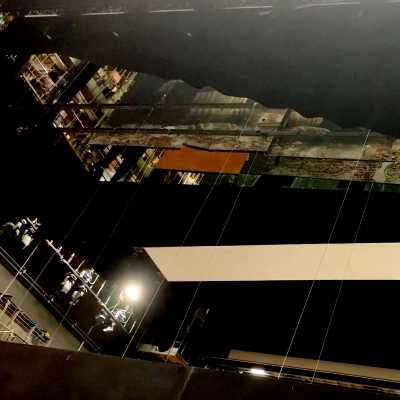Mechanical Equipment Unit
Mechanical Equipment Unit Description
Mechanical equipment is used in the event or performance space to create structures or to move sets, products or even performers.
Many different special types of mechanical equipment and stage machinery are used. The personnel who mount, operate and control the equipment are commonly referred to as stage technicians or, in the use case of complex theatre machinery, stage machinists. Equipment can be mounted and operated manually, electrically, or through hydraulic drives. The control systems used are very specific for the performance space and have a high degree of safety requirements. Most stage machinery found in theatres or venues (lifts, revolves, etc.) is permanently installed. However, mechanical equipment can also be mobile to be used in corporate events, concerts, trade shows, broadcast television, and other types of live events.
The competences listed in TeBeVAT are common for technicians using mechanical equipment in all areas of the sector.
Photo © Randell Greenlee
Scope note
ESCO: essential skills/competences of
Stage Technician
Automated Fly Bar Operator
Stage Machinist
Theatre Technician
Competences
The Work Organisation Unit competences are a prerequisite as a basis for all units.
Planning (10)
03 10 10 04 30 - Provide documentation (Prepare and distribute documentation to ensure all people involved in the production receive relevant and up‐to‐date information.)
30 00 10 03 10 - Translate artistic concepts to technical designs (Cooperate with the artistic team in order to facilitate the transition from the creative vision and its artistic concepts to a technical design.)
70 20 10 04 30 - Plan teamwork (Organise the working schedule of a group of people in order to meet all time and quality requirements.)
70 30 10 05 10 - Develop project schedule (Define the project completion stages and create a timeline. Synchronise necessary activities, taking into account the convergence of production elements. Establish a schedule.)
Preparing (20)
03 00 20 04 10 - Set up technical stage equipment (Install mechanical and technical stage equipment. Test the installation to make sure everything is in working order.)
03 00 20 04 31 - Prevent technical problems with stage equipment (Anticipate possible problems with mechanical and electromechanical stage equipment.)
04 60 20 03 10 - Hang chain hoists (Install and set up chain hoists in building constructions.)
04 60 20 03 20 - Assemble truss constructions (Use trusses, metal structures that derive strength from their construction involving triangular shapes, to construct stages for performances.)
15 50 20 04 10 - Pack electronic equipment (Safely pack sensitive electronic equipment for storage and transport.)
30 00 20 04 10 - Adapt existing designs to changed circumstances (Alter an existing design to changed circumstances and ensure that the artistic quality of the original design is reflected in the final result.)
30 00 20 04 15 - Adapt artistic plan to location (Accommodate plans to other locations with respect for the artistic concept.)
30 00 20 04 20 - Support a designer in the developing process (Provide assistance and support to designers throughout the course of the development process.)
Rehearsing (30)
30 00 30 03 10 - Adapt to artists' creative demands (Work with artists, striving to understand the creative vision and adapting to it. Make full use of your expertise and capabilities to reach the best possible result.)
Running the Show (40)
00 00 40 03 10 - Communicate during show (Interact efficiently during a live performance, in order to anticipate any possible malfunctionings).
03 00 40 04 10 - Operate stage movement control system (Command control systems for stage movement, e.g. flying mechanisms. Use manual or electric systems.)
03 10 40 04 22 - Interact with actions on the stage (Take cues from actions on the stage and interact with them. Take decisions on the exact timing and procedures in a live environment in order to produce a fluid and consistent performance.)
03 10 40 03 22 - Follow time cues (Observe the conductor, orchestra or director and follow text and vocal scores to time cues accurately.)
03 20 40 05 10 - Operate automated stage movement control system (Handle an automated controlling system for stage movement and flying systems. Prepare and program the system including multiple synchronised movements.)
After the Show (50)
00 00 50 03 10 - De‐rig electronic equipment (Remove and store various types of electronic equipment safely after use).
00 00 50 03 20 - Store performance equipment (Dismantle sound, light and video equipment in a safely manner after a performance).
Maintenance (60)
03 00 60 04 10 - Maintain stage equipment for horizontal movement (Execute maintenance activities on electro‐mechanical equipment for horizontal movement on stage level.)
03 20 60 04 10 - Maintain moving constructions on stage (Check, maintain and repair electrical and mechanical elements of stage elevators and stage traps.)
04 60 00 03 10 - Perform regular checks on rigging equipment (Execute regular in‐depth checks on rigging equipment at the workshop and make the necessary repairs.)
04 60 60 03 20 - Maintain Rigging Equipment (Check rigging equipment before fitting up. Make small repairs if necessary.)